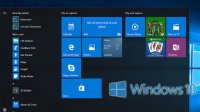Previously known as the Nokia Lumia, Microsoft Lumia was officially introduced to the public in November 2014 causing a ripple across the mobile device industry. See how Microsoft Lumia holds up to its competitors in the market with its features and my take on whether or not it is a good enough device to convert customers.
The history of Microsoft Lumia
Initially introduced in November 2011 as Nokia Lumia, the mobile device was the result of long term partnership between Nokia mobile and Microsoft. The two giants designed and marketed the mobile device which was running on the Windows operating system up until Microsoft decided announced it would purchase the business from Nokia mobile on September 3rd roughly two years later.

The deal was finally finalized on April 2014, and Microsoft started the development of its mobile device line. However, it was not until November 2014 did Microsoft roll out its non-Nokia device which was referred to as Lumia 353, and three of mobile phone devices later in October 2015.
The devices announced in October 2015 differ significantly from the Lumia 353; the Lumia 550, Lumia 950, and the Lumia 950 XL were running on Windows 10 Mobile operating system as opposed to its predecessor which was previously running on Windows 8.1 Lumia Denim.
Three of these devices all had high-powered and premium quality cameras of a whopping 20 megapixels, the features were also impressive, but there was a giant elephant in the room: the operating system never took off quite like Android. Still, this did not stop Microsoft from developing another mobile device. The company rolled out its last mobile device, the Lumia 650, on February 15th last year.
Microsoft Lumia is different, but is it in a good way?
The Microsoft Lumia lines were well-known for its one-of-a-kind nature, but if nature above was what set them apart of its competitors in the industry, why would Microsoft cease the production and sales at the end of last year?
That is a radical decision to make, more so when you keep in mind the fact that the company stopped producing and selling the phones right after its grand introduction. If Microsoft Lumia was different, was the difference really in a good way? The following is a list of Microsoft Lumia devices along with the features:
- Lumia 650, is equipped with 16GB memory, 5.0” HD OLED display, 8MP rear camera, and 5MP front camera.
- Lumia 950, is equipped with a 1.8GHz hexacore processor, 5.2” quad HD display, and 20MP sensor with ZEISS optics.
- Lumia 950 XL, is equipped with a 2.0GHz octa-core processor, 5.7” quad HD display, and 20MP sensor with ZEISS optics.
As impressive as the devices were business is still business. Microsoft may have ditched the Lumia because it didn’t sell well, or sacrificed it for the sake of its Surface Phone it’s been developing for a while now. While we can never find the motive behind the decision, Microsoft Lumia devices will forever be remembered as impressive devices which push the boundaries – phones that work like PCs.


